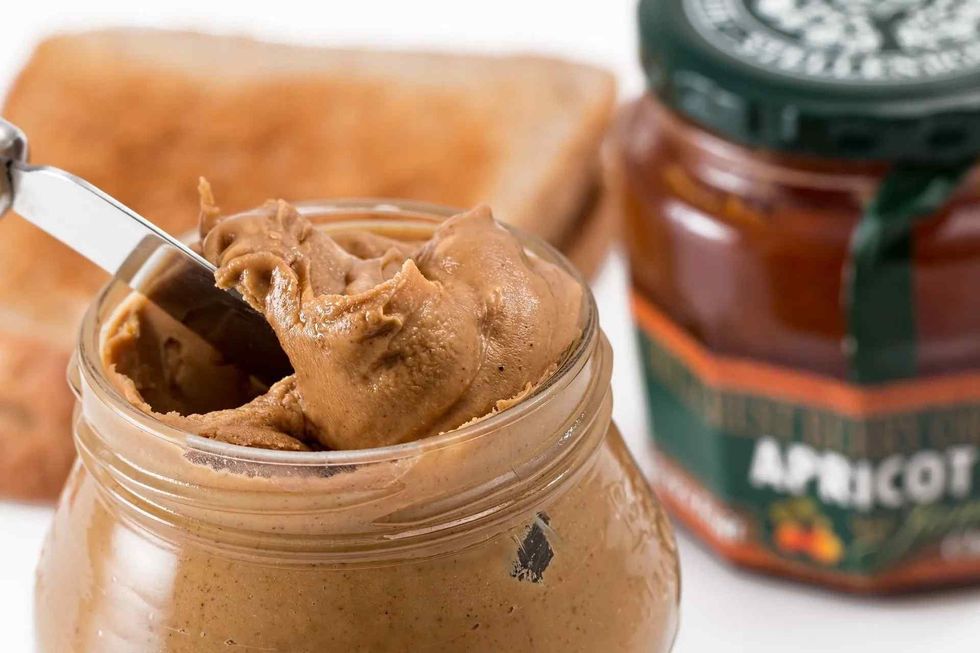77 Interesting And Healthy Food Facts That We All Should Know

Whether or not your favorite foods are good for you can be challenging to answer.
Trying to eat healthily can be difficult due to the abundance of 'healthy' foods available in supermarkets, as well as misleading labels on many of them. The decisions you make about your food have a direct impact on your health.
Indeed, the decisions you make today can have an impact on your health now and in the future, if you make them wisely. You can learn whether or not the food in your diet provides you with the nutrients you require by reading on for some fun food facts.
Examples Of Good Food And Junk Food
Different fruits, vegetables, whole grains, lean proteins, and good fats are among the fresh and natural foods needed to maintain a healthy and balanced diet. Your body needs nutrition to carry out various biological functions, fight illness, and prevent disease.
- Healthy foods include apples, leafy green vegetables, carrots, oats, whole grains, beans and legumes, fish, eggs, avocado, milk and milk products, and olive oil, to name a few.
- On the other hand, junk food is a highly processed food made up of 'empty' caloric foods high in saturated fat, sugar, and nutrients that do not help the body nourish, focus, or carry out critical daily activities.
- Chips, chocolate cookies, cakes, pastries, candies, cola, ice cream, and a long list of fast food favorites like pizza, spaghetti, burgers, and French fries are all included.
- Instead of eating farm-raised salmon, wild salmon is a healthier option.
- Replacing unhealthy food with healthier options like fruit snacks like maraschino cherries, no added sugar, fresh fruit juice instead of ice cream is always a good idea.
- Healthier options are available at all grocery stores open to all.
- Also, opt for ground beef which is naturally pink and not made pink, by adding red food dye.
- It is better to have natural coconut water instead of store-bought one, which has added preservatives to extend their shelf.
- Try adding fresh chili peppers to your food as this not only makes your food taste better with some extra spice and flavor, it also helps you to burn some calories too!
- You can replace your chocolates with roasted cocoa beans powder without any sugar to get a healthy dose of feel-good.
- Along with peanut butter, you can add cocoa butter with fruit snacks to make a healthy meal for kids.
- Also white chocolate with dark chocolate chunks with some crackers is a good option.
Here are some excellent healthy food examples:
Spinach
- It was good enough for Popeye, so it should work for you too. Spinach is a nutrient-dense superfood readily available in almost all stores, thanks to its growing popularity.
- It makes no difference whether it's fresh, frozen, or canned, as our pipe-smoking sailor pal prefers because spinach is high in energy while low in calories.
- It is one of the most nutritious foods on the planet and contains many essential vitamins including vitamin A, vitamin K, and folate.
Garlic
Yes, it gives you bad breath, but trust us when we say it has many health benefits.
- Garlic has been used as a medicinal herb to prevent illness for a long time now as it is a property to inhibit germs’ growth.
- It's also anti-inflammatory and helps to lower cholesterol and blood pressure.
So put up with the odor, buy some mouthwash, and stock up on garlic.
Lemons
Lemons are known as one of the world's healthiest foods.
- The sour-tasting fruit has alkalizing properties of a superfood with potent anti-inflammatory properties as well as the ability to inhibit cancer cell proliferation.
- They're good for the liver and intestines, and they've got the same amount of vitamin C as an orange.
So, when life hands you lemons, say thank you and sip a glass of water with a slice instead of having a sugary glass of orange juice.
Beetroots
The purple vegetable is often overlooked for being one of the healthiest foods available. Others, however, argue that it can still be classified as a superfood, which we agree with.
- Beets are beneficial to the mind and may help to reduce heart rate.
- According to the latest health-related research reports, it improves workout performance and may even help prevent dementia.
- Beet is known to be high in magnesium, folate, and vitamin C.
- You can make beet part of your daily diet by adding in salad, smoothies, and soups.
Lentils
- Lentils have been the staple diet of Middle Eastern and Indian food for thousands of years.
- Due to their health benefits, they have now made their way to the United Kingdom and the United States.
- Lentils are the perfect vegetarian source of protein and fiber.
- Their nutritional benefits include improving and maintaining heart health, assisting in healthy weight loss, combating blood sugar swings that can lead to diabetes or fatigue, and promoting digestive health.
- For vegetarians and vegan diet followers, lentils can become a part of their daily protein needs and be used as a substitute for meat in cooking.
If you haven't tasted a variety of lentils yet, we suggest you at least try the locally available ones. You can make yummy stews or curries or toss them into a warm salad to get the maximum benefits from them.
Now that we have discussed different types of healthy foods, let's have a look at some of the junk foods which you should avoid. The list is quite extensive such as fried foods, sugary drinks, excessive cheese, processed foods, foods with preservatives, and foods with excessive monosodium glutamate.
Various Types Of Diets
Here are the various types of diets from which you can choose the most suitable option:
- Atkins Diet: The Atkins nutritional approach, popularly called the Atkins diet, is a low-carbohydrate diet that focuses on controlling insulin levels in the body. Insulin levels rise and fall rapidly in people who eat a lot of refined carbohydrates. Insulin levels rise, causing the body to save energy from the food it consumes, reducing the likelihood of burning stored fat for energy.
- As a result, those who follow the Atkins diet eat as much protein and fat as they want while avoiding carbs. The Atkins Diet, despite its long-standing popularity, has some disadvantages. If you're considering trying the Atkins Diet, consult your physician first.
- Zone Diet: On the Zone Diet, each meal must contain 40% carbohydrates, 30% lipids, and 30% energy. Insulin control is also emphasized, leading to more successful weight loss and body weight control than other methods.
- The Zone diet emphasizes consuming high-quality carbs (non-processed carbohydrates) and healthy fats like olive oil, avocados, and almonds.
- Ketogenic Diet: The low-carb diet has been used to treat various ailments for decades, and it is currently being researched for other applications.
- It entails eating fewer carbohydrates and more fat. It may seem counterintuitive, but it allows the body to use fat as a source of energy rather than carbohydrates.
- Healthy fats found in avocados, coconuts, Brazil nuts, seeds, fatty seafood, and olive oil are generously included in the diet so that the body gets its dose of good quality fats.
- The diet causes fat deposits to be broken down for fuel, resulting in compounds known as ketones through a process known as ketosis. However, this diet poses risks r for patients with type 1 diabetes, such as ketoacidosis, leading to diabetic coma and death. Even though most studies are only two years or less, there is some promising research in diabetes treatment, metabolic health, weight loss, and body composition change.
- Lacto-vegetarians, fruitarian vegetarians, Lacto-Ovo vegetarians, organic food diet vegetarians, ovo-vegetarians, multiple-input, and multiple-output vegetarians, and a tractor-trailer are among the various types of vegetarians.
- The vast majority of vegetarians are lactose-vegetarians, meaning they only eat eggs, dairy, and honey. According to current research, vegetarians have lower body weight, are less prone to illness, and have a longer life expectancy than meat-eaters.
- Mediterranean diet: It is a type of Southern European cuisine that focuses on the eating habits of Cretans, Greeks, and Italians in southern Italy.
- Even though Portugal does not border the Mediterranean Sea, it is now included alongside Spain, southern France, and Portugal.
- Fresh foods as a dessert, lentils, nuts, whole cereals, seeds, and olive oil as the primary dietary fats are all promoted.
- The most common dairy products are processed cheese and yogurt.
- Amounts of seafood and poultry, around four eggs per week, modest amounts of lean meat, and low or moderate alcohol consumption are also included in the diet.
- The Mediterranean diet contains about 1% fat, with saturated fats accounting for no more than 8% of total calories in the Mediterranean diet and is known as a balanced diet.
Types of Nutrients In Food
Here are some of the essential nutrients that you can get from your food:
- Water: Water makes up 45-75% of our body weight and is essential for good health. Water is used in various bodily activities and aids in the regulation of our body temperature. Most blood and other bodily fluids are made up of water, which helps transport nutrients throughout the body, including each cell. The amount of water we need each day varies depending on our age, activity level, and other things, but drinking 8-10 glasses per day is recommended.
- Carbohydrates: Carbohydrates (also known as carbs) are the body's primary energy source. The fuel that powers our organs is blood glucose.
- Carbohydrates are divided into simple sugar (which is easier to digest) and complex starch or fiber (which is more difficult to digest).
- Fiber is necessary for gut health and cholesterol metabolism, even though we cannot digest it.
- According to the National Dietary Recommendations, carbohydrates should account for 45-90 % of our daily calories.
- Fruits, vegetables, cereals, nuts, seeds, sugar, honey, and dairy products contain carbohydrates.
- Protein: Proteins are made up of different amino acids that serve as the building blocks of human tissues.
- Protein is required for biological tissue growth, repair, and maintenance.
- We can convert protein into blood glucose to use as energy if we don't get enough energy from carbs or fat.
- Protein can be found in varying amounts in a variety of foods. Meat, dairy, poultry, fish, beans, peas, nuts, seeds, and dairy foods are the best protein sources.
- Fat: Fat is our most concentrated energy source, providing twice as many calories per gram as carbohydrates. Additional calories are stored as fat in our bodies and will be used later.
- Despite this unfavorable role, fats are necessary for good health in various ways.
- Fat is used as a component of hormones in metabolic processes to insulate our bodies and absorb stress to protect various bodily components (in our palms or soles of our feet and around internal organs).
- Our cell membranes have fat as one of their components, and our brains are about 60% fat. Certain fats, such as Omega-3s, are essential and must be obtained through our diets. Fats can be found in animal products, dairy foods, and oils from plants such as olives, avocados, canola seeds, and coconuts.
- Vitamins: Vitamins are required for the proper functioning of your body, though in much smaller amounts than the preceding nutrients.
- Each vitamin is involved in a specific process in your body, such as metabolism, growth and development, and immune system function.
- Vitamins (B complex vitamins and vitamin C) are either fat-soluble or water-soluble (vitamins A, D, E, & K).
- Vitamins are found in almost every meal, and we'll go over each one in more detail in future posts.
- Minerals are also required for our bodies to function correctly (think of the periodic chart from chemistry). Some minerals are necessary for metabolic processes, while others, such as calcium in our bones and teeth, are essential for body structure.
- Minerals and traces of many minerals can be found in various foods.

What nutrient facts are on food labels?
Total fat, saturated fat, trans fat, hypertension, salt, total carbohydrate, dietary fiber, total sugars, added sugars, protein, and specific vitamins and minerals must be listed on food labels.
- While the producer must disclose the exact amount and percentage DV of vitamin D, calcium, zinc, and potash, the producer is free to include other micronutrients.
- They must mention any vitamins and minerals added to the food, or if the package labeling comments on their health effects or the amount included in the meal (for example, 'high' or 'low').
- Use the % DV method to determine whether a food serving is high or low in a given nutrient. As a general rule of thumb:
- Poor nutrition is defined as a nutrient with a daily value (DV) of less than 5% per serving.
- A nutrient containing 20% or more of the daily value (DV) per serving is considered high.
- Choose meals rich in dietary fiber, vitamin D, calcium, iron, and potassium whenever feasible.
Food Fun Facts
Here are some interesting facts about foods that you would certainly enjoy:
- Raspberries are a part of the rose family.
- Broccoli is a better source of protein than steak.
- Apples provide more energy than coffee.
- Tomato ketchup was formerly considered to have medicinal qualities that might aid in the treatment of a range of illnesses, including diarrhea.
- Some foods, such as ranch dressing or coffee creamer, paint, plastic, and sunscreen, contain titanium dioxide.
- White chocolate is different from regular chocolate.
- Both fruit delights and autos are covered with wax.
- Ripe cranberries, when completely ripe, bounce about like rubber balls.
We Want Your Photos!
More for You
See All
Bachelor of Science specializing in Computer Science

Christian MbaBachelor of Science specializing in Computer Science
Christian Mba is an experienced blogger and content writer with over a decade of experience. He holds a Bachelor of Science degree in Computer Science from Nigeria and has a keen interest in Python programming. Along with his writing and blogging expertise, he is also an SEO specialist with more than six years of experience. Chris, as he is commonly known, has a passion for music and enjoys playing the piano.
Disclaimer
1) Kidadl is independent and to make our service free to you the reader we are supported by advertising. We hope you love our recommendations for products and services! What we suggest is selected independently by the Kidadl team. If you purchase using the Buy Now button we may earn a small commission. This does not influence our choices. Prices are correct and items are available at the time the article was published but we cannot guarantee that on the time of reading. Please note that Kidadl is a participant in the Amazon Services LLC Associates Program, an affiliate advertising program designed to provide a means for sites to earn advertising fees by advertising and linking to Amazon. We also link to other websites, but are not responsible for their content.
2) At Kidadl, we strive to recommend the very best activities and events. We will always aim to give you accurate information at the date of publication - however, information does change, so it’s important you do your own research, double-check and make the decision that is right for your family. We recognise that not all activities and ideas are appropriate for all children and families or in all circumstances. Our recommended activities are based on age but these are a guide. We recommend that these ideas are used as inspiration, that ideas are undertaken with appropriate adult supervision, and that each adult uses their own discretion and knowledge of their children to consider the safety and suitability. Kidadl cannot accept liability for the execution of these ideas, and parental supervision is advised at all times, as safety is paramount. Anyone using the information provided by Kidadl does so at their own risk and we can not accept liability if things go wrong.
3) Because we are an educational resource, we have quotes and facts about a range of historical and modern figures. We do not endorse the actions of or rhetoric of all the people included in these collections, but we think they are important for growing minds to learn about under the guidance of parents or guardians.







